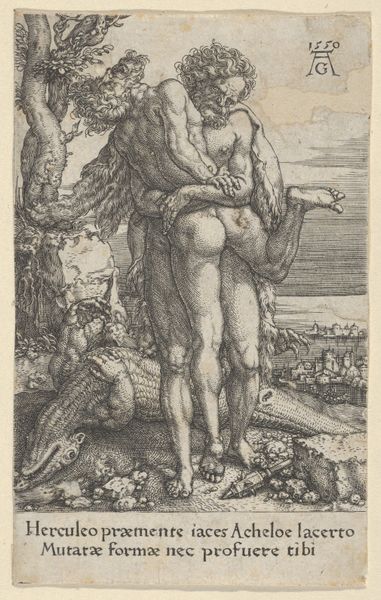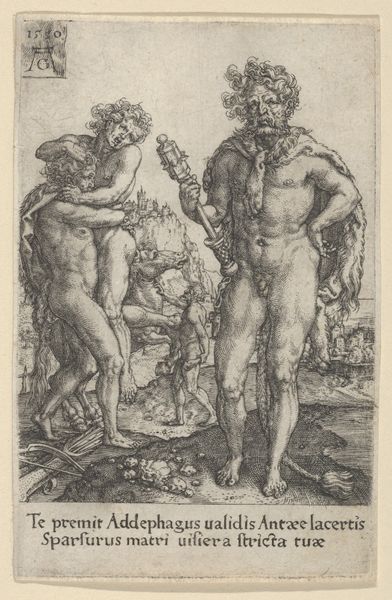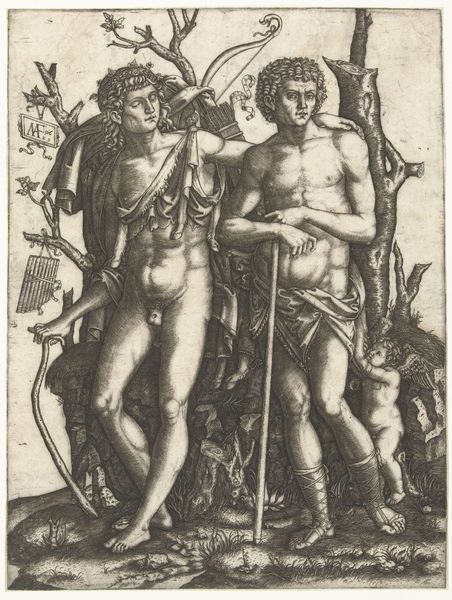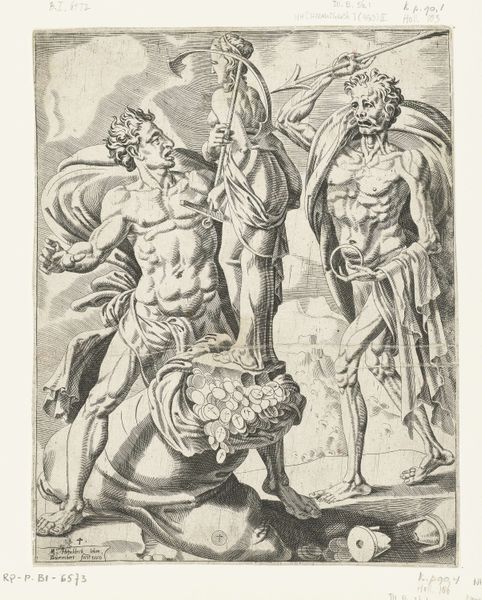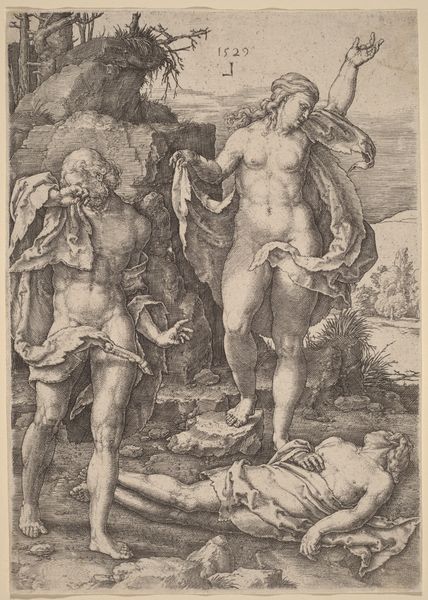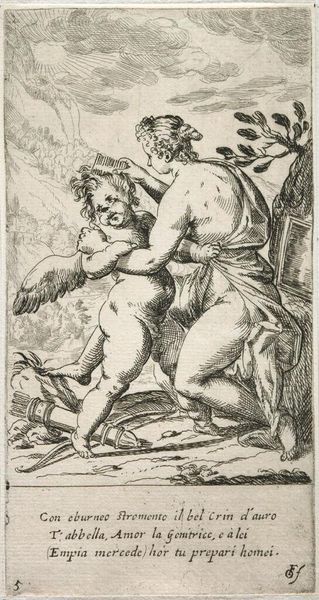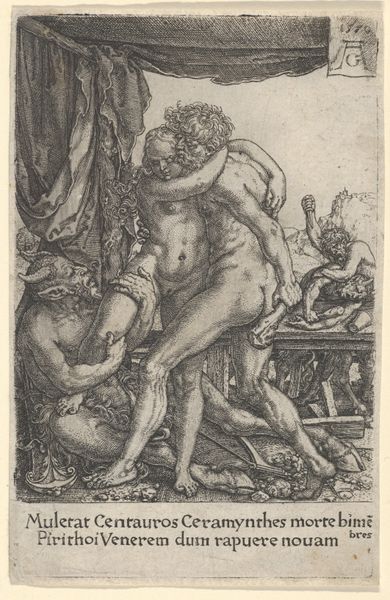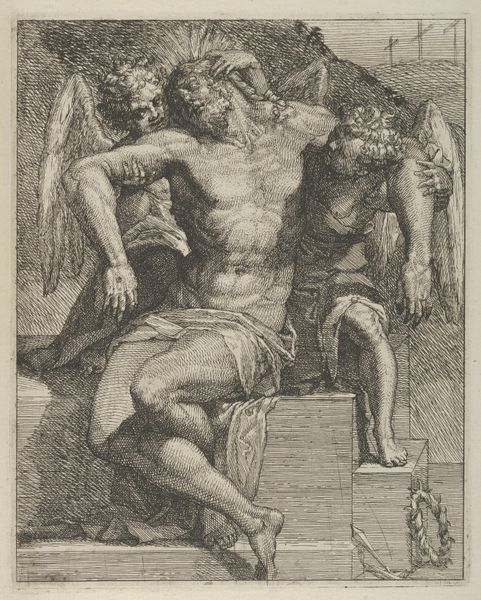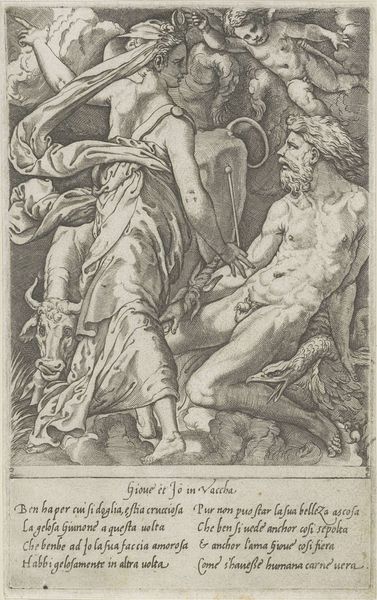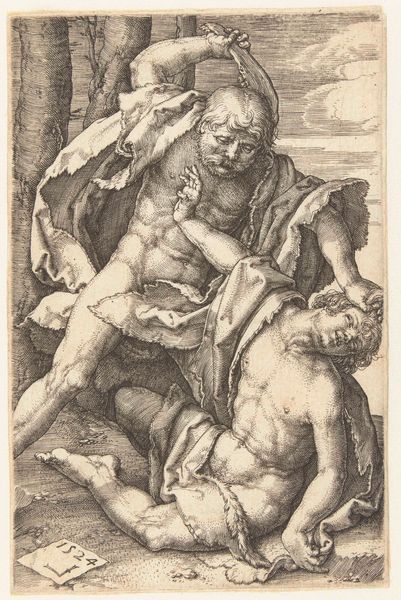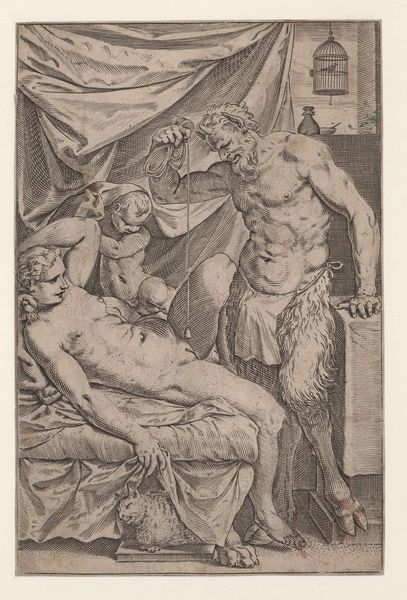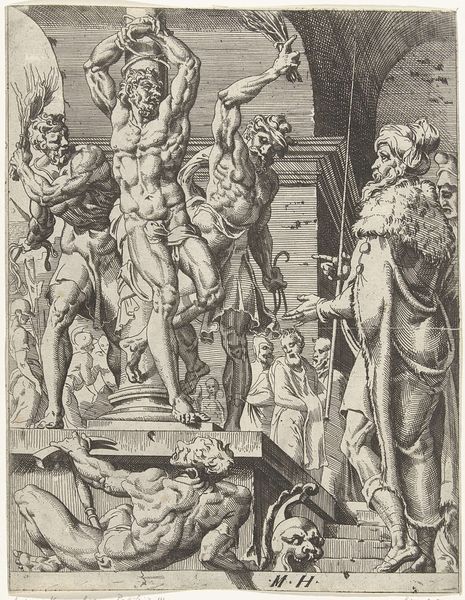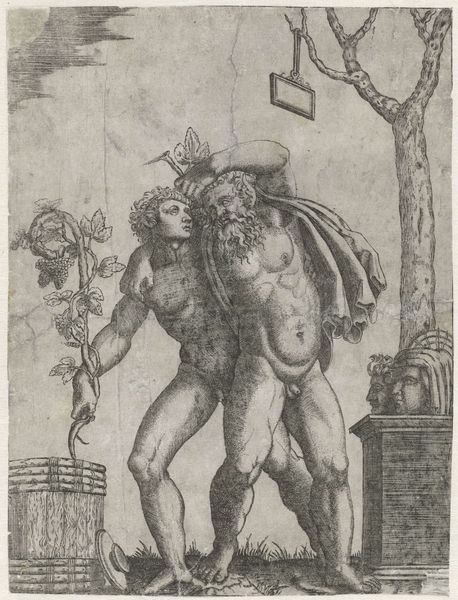
print, engraving
# print
#
old engraving style
#
figuration
#
11_renaissance
#
history-painting
#
northern-renaissance
#
nude
#
engraving
Dimensions: height 107 mm, width 69 mm
Copyright: Rijks Museum: Open Domain
Curator: Here we have Heinrich Aldegrever's "Hercules and Atlas," an engraving from 1550, now residing here at the Rijksmuseum. Editor: Wow, that's a powerful image. I'm struck by the texture of the engraving. The cross-hatching gives the figures such depth and really emphasizes the weight, particularly on Hercules's shoulders. You can almost feel the strain. Curator: Exactly! Aldegrever was working within a context of humanist learning. These classical myths were being re-examined. This piece reflects a trend in Renaissance art of depicting mythological narratives as vehicles for conveying moral or philosophical messages. Atlas bearing the globe was a fairly common symbol for knowledge, burden, and even earthly toil. Hercules relieving Atlas alludes to heroic strength and a respite from duty. It ties into larger dialogues about power, servitude, and freedom which were important to people at this time. Editor: Right, the toil of labor. And you can see how the artist, through the engraving process, translates physical burden. Consider the economics of printmaking too. How easily could the image have been reproduced and circulated in the 16th Century? Look closely at the contrast between the nude body and drapery of each subject in the piece; Aldegrever must have given meticulous thought to how these various qualities translate in his medium. Curator: Very true. Printmaking served an essential role in disseminating ideas. These prints would be reproduced, sold, and dispersed. An artwork like this would thus affect society, offering accessible access to these ideas from classical antiquity to anyone who obtained one. Editor: I see that it's more than just technical virtuosity. It is through his material approach that the themes of labor and weight and classical burden really land for a viewer. Curator: Indeed. Seeing Hercules providing a moment of respite has an affect in relation to the viewer, too, considering the burden of existing in the 16th century. Aldegrever leaves us plenty to consider in terms of societal influence! Editor: So much depth in what seems like such a straightforward piece, proving the crucial link between production, art, and meaning.
Comments
No comments
Be the first to comment and join the conversation on the ultimate creative platform.
